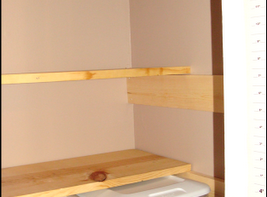Mixing Patterns and Textures in Interior Design

In interior design, mixing patterns and textures can add depth, visual interest, and create a unique and personalized space. When done correctly, the combination of various patterns and textures can elevate the overall aesthetic of a room, making it feel inviting and visually stimulating. This article will explore different techniques and considerations for integrating patterns and textures into your interior design scheme.
Understanding Patterns
Patterns are designs that repeat in a predictable manner, such as stripes, polka dots, or floral motifs. They can be subtle or bold, and each pattern has its own aesthetic impact. When selecting patterns for your interior design, consider the scale, color, and complexity of the patterns. A harmonious balance between different patterns can create a cohesive look.
Exploring Texture
Textures refer to the surface quality of a material, whether it is rough, smooth, or somewhere in between. Incorporating textures can add tactile appeal to a room and create visual contrast alongside patterns. Examples of textures include exposed brick walls, velvet upholstery, or a shaggy rug. The range of textures available offers endless possibilities for creating depth and adding visual interest to your space.
Finding Balance
One key aspect of successfully mixing patterns and textures is finding the right balance. It is important to avoid overwhelming the space with too many patterns or textures that clash. Aim for a cohesive and harmonious combination by considering the following:
Varying pattern scales: Mix large-scale patterns with smaller-scale ones to create contrast and visual interest.
Color coordination: Select patterns and textures that share similar color tones to create a unified look.
Pattern distribution: Spread patterns evenly throughout the space to avoid concentrated areas that can feel busy.
Texture layering: Experiment with layering different textures to add depth and create a tactile experience.
Creating Focal Points
When incorporating patterns and textures into your interior design, it can be helpful to designate focal points within the space. This allows certain elements to stand out and draws attention to specific areas. Focal points can be achieved through bold patterned wallpaper, an intricately textured statement piece of furniture, or an eye-catching rug. By strategically placing focal points, you can highlight the desired aspects of the room and create a visually engaging space.
Combining Styles
Mixing patterns and textures also offers an opportunity to combine different design styles, adding an eclectic or unique touch to your space. For instance, pairing a vintage floral pattern with a modern geometric print can create an interesting juxtaposition. Be adventurous and experiment with various styles, but remember to maintain a cohesive overall look.
Conclusion
When it comes to interior design, mixing patterns and textures can enhance the visual appeal of a room. It adds dimension, personality, and creates an inviting atmosphere. By understanding patterns, exploring textures, finding balance, creating focal points, and combining styles, you can create a harmonious space that reflects your individuality and style.


